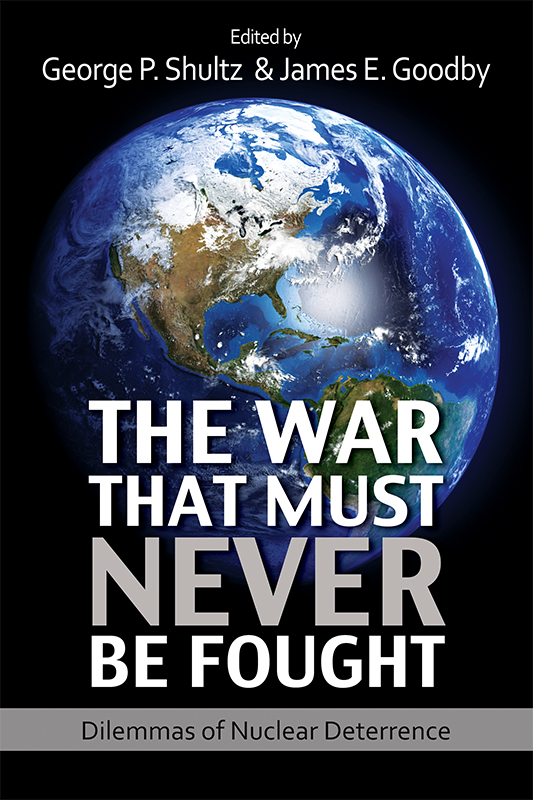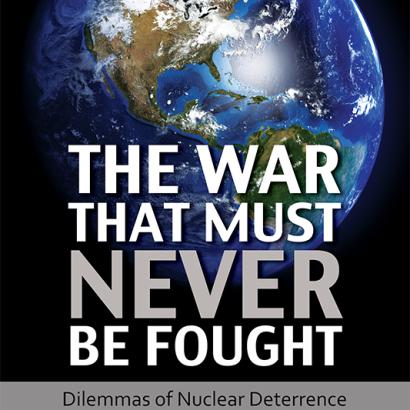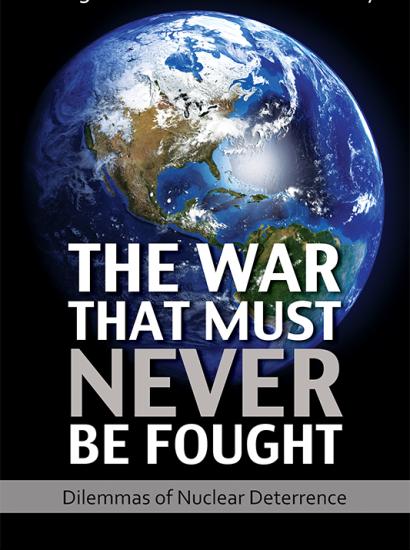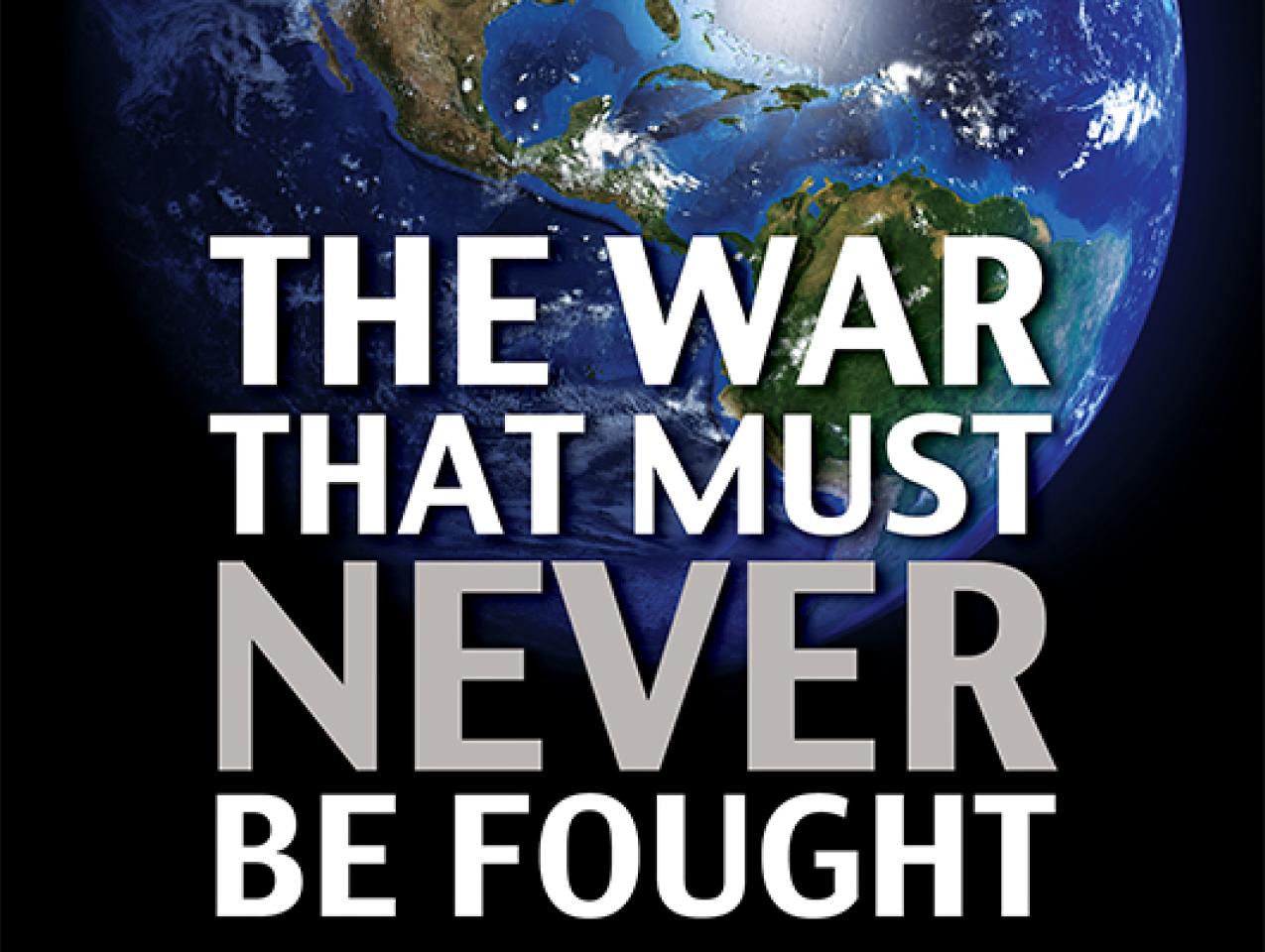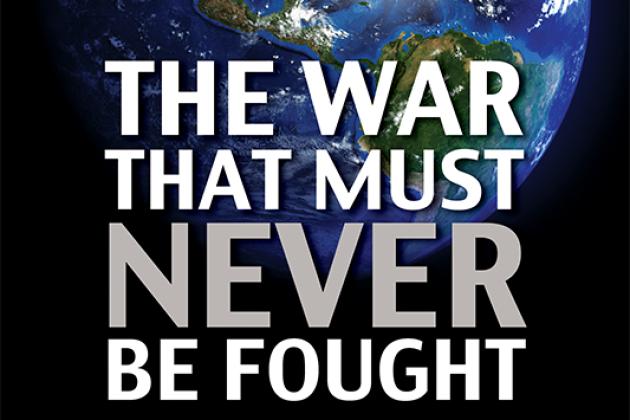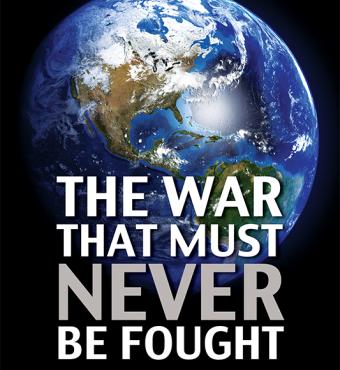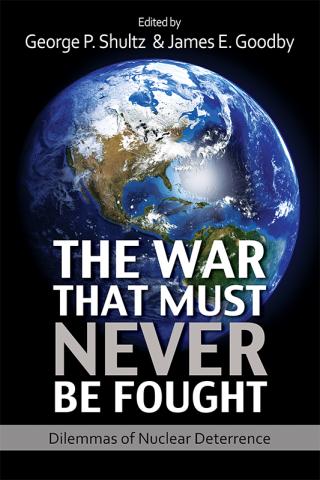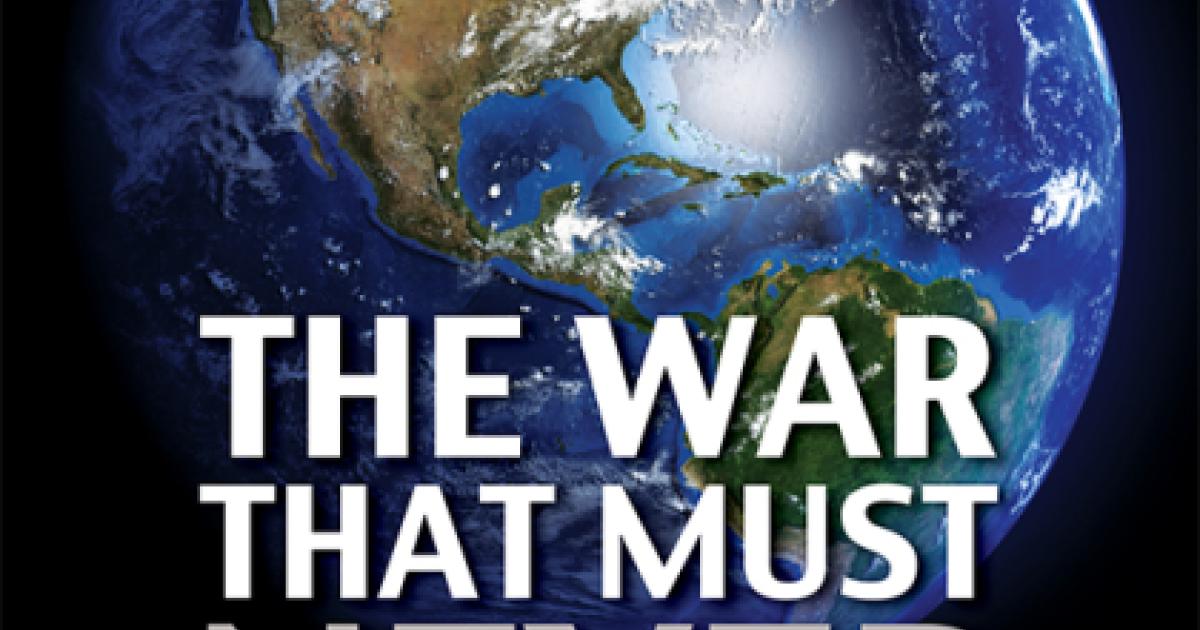The year 2015 is the seventieth anniversary of the first nuclear explosion. It took place at a desert test site at Alamogordo, New Mexico, on July 16, 1945. The city of Hiroshima was obliterated by an atom bomb on August 6, 1945, and Nagasaki was destroyed on August 9. I was a Marine Corps captain at the time, on a troop ship in the Pacific bound for the United States where we expected to regroup and return to the Pacific for the invasion of Japan. We heard about Hiroshima and then Nagasaki while on the ship. None of us had ever heard of an atom bomb or had any idea what it was. By the time we arrived in California the war in the Pacific was over. When I saw the photographs of the two cities I was shocked at the devastation from one bomb, and I realized that something entirely new had entered human history.
At the outset of the nuclear age, the American strategist Bernard Brodie wrote that “thus far the chief purpose of our military establishment has been to win wars. From now on its chief purpose must be to avert them.” President Eisenhower followed that precept and cut the US defense budget, especially for ground forces, while building a modest nuclear deterrent force. The idea behind this was that war could be averted only by “the certain inescapable power to inflict swift, and crushing retaliation,” as Winston Churchill said. But Brodie’s and Eisenhower’s premise was challenged as strategists, mostly American, debated how war could be averted when two bitter adversaries had large numbers of nuclear weapons. President Kennedy warned of a choice between “holocaust and humiliation.” He added scores of new ballistic missiles and built up US conventional forces.
After Kennedy’s success in resolving the Cuban Missile Crisis in 1962, the Soviet leadership forced Nikita Khrushchev to resign from his leadership position and adopted a massive nuclear buildup program. The numbers of nuclear weapons multiplied and the premise that war must be and could be averted by threatening nuclear retaliation had turned into a nuclear arms race. Each side claimed that it did not want war but could prevail if a nuclear war occurred.
Some of us painted a somewhat different picture in 2011. In an op-ed published by the Wall Street Journal on March 7, 2011, William Perry, Henry Kissinger, Sam Nunn, and I wrote: “As long as there has been war, there have been efforts to deter actions a nation considers threatening. Until fairly recently, this meant building a military establishment capable of intimidating the adversary, defeating him or making his victory more costly than the projected gains. This, with conventional weapons, took time. Deterrence and war strategy were identical. The advent of the nuclear weapon introduced entirely new factors. It was possible, for the first time, to inflict at the beginning of a war the maximum casualties. The doctrine of mutual assured destruction represented this reality.”
Deterrence based on nuclear weapons, we went on to explain, has three elements:
· It is importantly psychological, depending on calculations for which there is no historical experience. It is therefore precarious.
· It is devastating. An unrestrained nuclear exchange between superpowers could destroy civilized life as we know it in days.
· Mutual assured destruction raises enormous inhibitions against employing the weapons.
The logic was impeccable if one accepted the premise that nuclear weapons could deter only if they were seen to be capable of being used “successfully” on a large scale in warfare. A strategy of prevailing in a protracted nuclear war became the official policy of the United States at the end of the Carter administration. The idea was that deterrence would work only if the United States could respond to an enemy nuclear attack with a controlled nuclear response of its own, holding enough nuclear weapons in reserve to be able to respond to yet another nuclear attack from the enemy, and so on until the enemy’s nuclear forces were eliminated.
The technical ability to launch with one missile a number of independently targetable nuclear warheads made it possible to strike several targets with one missile. The advance of technology also permitted much greater accuracy in the delivery of these warheads and, consequently, the number of potential military targets also multiplied. This created incentives to launch a first disarming strike. The side that used its nuclear weapons first could theoretically gain an edge. By the time Ronald Reagan became president of the United States in 1981, there were twenty-four thousand bombs and warheads in the US nuclear arsenal; the Soviet Union had about thirty thousand. There was no end in sight. Many missiles and bombs on both sides were on high alert, ready to launch.
Ronald Reagan came into office with the deep sense that threatening millions of human lives and the destruction of civilization was immoral. He saw that nuclear deterrence was flawed in its very essence and that this error had led to a whole edifice of reasoning about deterrence that also was flawed. I became his secretary of state in 1982 and soon became familiar with his strategic thinking. Early in my tenure in office, my late wife, O’Bie, and I spent part of a snowy weekend at the White House with President Reagan and Nancy Reagan. I came to realize then that he intended to engage directly with the Soviet leadership on what he saw as a life-or-death issue, not only for the United States but for humanity in general. He felt that he had to rebuild US defenses first, but that when that had been set in motion he wanted a constructive, broad-based dialogue with Soviet leaders. I shared his views and worked to support his objectives.
In his 1984 State of the Union address, the president spoke directly to the people of the Soviet Union. He said, "There is only one sane policy, for your country and mine, to preserve our civilization in this modern age: A nuclear war cannot be won and must never be fought. The only value in our two nations possessing nuclear weapons is to make sure they will never be used. But then would it not be better to do away with them entirely?"
His words were met with disbelief by the establishment at the time. But the president met with a new Soviet general secretary, Mikhail Gorbachev, in Geneva in 1985. They issued a statement that echoed his State of the Union address: “a nuclear war cannot be won and must never be fought.”
In October 1986, President Reagan and I sat across a small table from Gorbachev and his foreign minister, Edouard Shevardnadze, in Reykjavik. We discussed the possibility of eliminating all nuclear weapons; no public posturing by the president or the general secretary, just private talks between national leaders.
We failed to reach an agreement in Reykjavik but President Reagan succeeded in enlarging the envelope of thinking about nuclear weapons very considerably. Not coincidentally, 1986 was the peak year for numbers of nuclear bombs and warheads globally. Today, the numbers are less than a quarter of what they were then.
The Reykjavik meeting led directly, in 1987, to a US-Soviet treaty that eliminated a whole class of intermediate-range nuclear weapons. Now, nearly thirty years later, that treaty’s future is in doubt as Russia appears poised to deploy weapons systems prohibited by the treaty. The problem it dealt with remains: those weapons had the potential for dividing Europe from the United States by posing, in the starkest terms, the perennial question of whether the United States would risk an attack on itself by defending European allies. The deployment in Europe of intermediate-range weapons of our own and NATO cohesion and resolve proved to be a turning point in ending the Cold War.
Today, the prospect of a Europe whole and free, which the end of the Cold War seemed to promise, is itself being threatened as Russian President Putin pursues his dangerous policies toward Ukraine. Those actions clearly violate the principles of the Helsinki Final Act and the terms of the arrangements, signed by Russia, that led Ukraine to send all the nuclear warheads on its territory to Russia for dismantlement.
When my colleagues, Henry Kissinger, William Perry, Sam Nunn, and I began our series of appeals in 2007 for serious attention to the nuclear threat, we thought that the goal of a world free of nuclear weapons would motivate nations to accept a series of restraints that would move the world, step-by-step, toward the total elimination of nuclear weapons. In our article of March 7, 2011, we asked: “Does the world want to continue to bet its survival on continued good fortune with a growing number of nuclear nations and adversaries globally?” We realized that the incidence of errors in nuclear operations is low, but that the risks are extremely high.
In a book I edited with Dr. Sidney Drell, entitled The Nuclear Enterprise, we listed the thirty-two “Broken Arrow” incidents that were recorded between 1950 and 1980. These are incidents that jeopardize the safety of US nuclear weapons. Several serious incidents have been reported in the US press very recently. And safety procedures probably are not better in other nuclear-armed nations, to say the least. It would be foolish to entrust the well-being and safety of humanity to a wager that nuclear deterrence can go on forever without any chance of mistakes or errors in judgments.
From the beginning of our series of appeals, my colleagues and I stressed that the world is a complicated place. We highlighted the regional conflicts that would have to be settled. We stressed that a world without nuclear weapons would not be the world as it is, minus nuclear weapons. Steps that will create the conditions for a world without nuclear weapons are essential. Several chapters in this book provide perspectives of the regions where conflicts have driven decisions to acquire nuclear weapons: Northeast Asia, South Asia, and the Middle East. Other chapters deal with the situation in Europe, the cockpit of the Cold War confrontation.
When President Obama took office, he endorsed the goal of a world without nuclear weapons and in a speech in Prague asked for agreement on several implementing steps. One of his prime goals was a new US-Russian treaty that would reduce the numbers of US and Russian warheads below the ceilings mandated in the Strategic Offensive Reductions Treaty of 1992 and in the first START agreement initiated by President Reagan.
Obama’s negotiating team succeeded in negotiating a treaty called “New START”; it was ratified by the US Senate in 2010 by a 71-26 vote. It created a new and very effective verification system and mandated a modest reduction in strategic nuclear weapons.
Why has it been so difficult to do these relatively simple things, and what does this tell us about nuclear deterrence and about the goal of a world free of nuclear weapons? It shows that negotiated treaties on cooperative security are inherently difficult to do because they tend to challenge the status quo. This is precisely what Reagan and Gorbachev set out to do. They succeeded because they provided strong leadership and because their people were ready for change.
Nuclear weapons were, and are, the gravest threat to humanity’s survival. Their effect in preventing wars has been overrated and reports of the damage they cause tend to be brushed aside. New studies show the major impact of their use on the climate and agriculture beyond all the other effects that we knew about previously. To depend on nuclear deterrence indefinitely into the future, especially when other means of deterrence are available, is foolhardy. On December 7, 2014, Pope Francis sent a letter to a conference in Vienna on the humanitarian impact of nuclear weapons. He wrote that “nuclear deterrence and the threat of mutually assured destruction cannot be the basis for an ethics of fraternity and peaceful coexistence among peoples and states. The youth of today and tomorrow deserve far more.”
The world has lately taken a turn for the worse with one result being a rising threat of nuclear proliferation. Here at Stanford University’s Hoover Institution, we take pride in what we have done to rekindle the flame of hope that burned so brightly at Reykjavik in 1986. In 1996 and again in 2006, we convened conferences commemorating the 1986 Reykjavik meeting. In January 2007, Secretary Kissinger, Secretary Perry, Senator Nunn, and I wrote and published the first of several articles that called for a world without nuclear weapons. The public response in the United States and abroad was swift and enthusiastic. It was a moment in history when people around the world obviously hungered for precisely that inspiration, for that infusion of hope. We cannot allow that moment to be squandered.
Editor's note: This essay is part of a series of pieces about nuclear deterrence that Defining Ideas will be publishing in the weeks ahead. All of the essays are and will be from the new Hoover Press book, The War That Must Never Be Fought.







